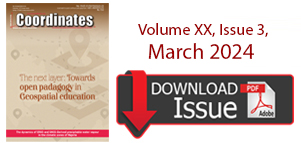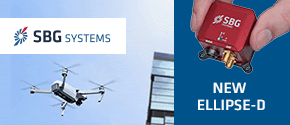Articles in the News Update Category
Lytx® Inc. has announced the rollout of its Weather Hazard Alerts, available to all clients as a project within the Lytx Lab tab in their accounts. This new AI-powered geospatial technology built on the Lytx Vision Platform was developed within Lytx Lab, an idea incubator and a way for Lytx engineers and safety experts to collaborate …
Union Minister of State (Independent Charge) Science & Technology, MoS PMO, Personnel, Public Grievances, Pensions, Atomic Energy and Space, Dr Jitendra Singh today launched state-of-art latest National Survey Network. The nationwide “Continuously Operating Reference Stations” (CORS) Network will be operated by the Survey of India.
The Survey of India has set up more than 1,000 CORS …
LocLab, part of Hexagon announced the launch of LocLab Cloud, powered by HxDR. The cloud-based platform offers a secure end-to-end solution for 3D digital twins, allowing management and monitoring of models.
It acts as an open platform, enabling partners to upload, update, access and share their own digital 3D content. Generic interfaces facilitate integration with existing …
Kongsberg Discovery has officially unveiled the EM 2042, a next-generation multibeam echosounder poised to redefine underwater data collection. With the capability to extend operational weather windows, offer unparalleled flexibility and deliver high-quality data, the EM 2042 empowers users in their quest to comprehend, safeguard and harness the ocean’s depths. This groundbreaking device boasts a lightweight …
Sentient Vision Systems (Sentient) has successfully completed live demonstrations of its AI-enabled ViDAR (Visual Detection and Ranging) payload deployed on Edge Autonomy’s VXE30 UAS. The VXE30 vertical take-off and landing (VTOL) solution is the latest and most advanced version of the “Stalker” series of small uncrewed aerial systems (sUAS) from Edge Autonomy. When coupled with …
Beep Inc., provider of autonomous shared mobility solutions, and Oxa, the autonomous vehicle software developer, today announced a partnership to deploy vehicles driven by Oxa’s self-driving software product, Oxa Driver, as Beep continues to advance its testing and operations across the United States.
Marking U.K.-based Oxa’s entry into the U.S. market, the strategic partnership will see Oxa’s …
Qualcomm Technologies, Inc. has announced a technology collaboration with Hyundai Motor Group (HMG/the Group) in the area of purpose-built vehicles (PBVs). Designed to serve as a future mobility solution from the Group, the PBVs are engineered to provide transportation services, as well as additional services that cater to the diverse needs of individuals, such as …
NVIDIA and Reliance Industries have announced a collaboration to develop India’s own foundation large language model trained on the nation’s diverse languages and tailored for generative AI applications to serve the world’s most populous nation.
The companies will work together to build AI infrastructure that is over an order of magnitude more powerful than the fastest …
Duke Energy has announced it is working with Accenture) and Microsoft on the development of a new technology platform designed to measure actual baseline methane emissions from natural gas distribution systems.
This unique platform will provide near-real time data collection, allowing Duke Energy’s field response teams to more rapidly identify and repair methane leaks.
The cloud-hosted platform …
M3 Systems has launched a disruptive project, co-financed by the Occitanie Region, aiming to provide new GNSS services.
The IOD-full software-defined radio (SDR) GNSS project will enable new services through a reconfigurable SDR payload, enabling on-demand analysis of GNSS signals from space. Through space-based signal analysis, this project paves the way for reconfiguring GNSS signal processing and …







 (5.00 out of 5)
(5.00 out of 5)